
Leo Kottke is an American acoustic guitarist. He is known for a fingerpicking style that draws on blues, jazz, and folk music, and for syncopated, polyphonic melodies. He has overcome a series of personal obstacles, including partial loss of hearing and a nearly career-ending bout with tendon damage in his right hand, to emerge as a widely recognized master of his instrument. He resides in the Minneapolis area with his family.

Takoma Records was a small but influential record label founded by guitarist John Fahey in the late 1950s. It was named after Fahey's hometown, Takoma Park, Maryland, a suburb of Washington, D.C.
Peter Lang is an acoustic guitarist who recorded for Takoma Records with John Fahey and Leo Kottke.

American primitive guitar is a fingerstyle guitar music genre, developed by the American guitarist John Fahey in the late 1950s. While the term "American primitivism" has been used as a name for the genre, American primitive guitar is distinct from the primitivism art movement.
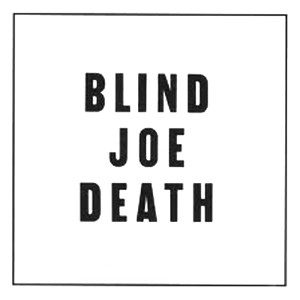
Blind Joe Death is the first album by American fingerstyle guitarist and composer John Fahey. There are three different versions of the album, and the original self-released edition of fewer than 100 copies is extremely rare.

John Aloysius Fahey was an American fingerstyle guitarist and composer who played the steel-string acoustic guitar as a solo instrument. His style has been enormously influential and has been described as the foundation of the genre of American primitive guitar, a term borrowed from painting and referring mainly to the self-taught nature of the music and its minimalist style. Fahey borrowed from the folk and blues traditions in American roots music, having compiled many forgotten early recordings in these genres. He would later incorporate 20th-century classical, Portuguese, Brazilian, and Indian influences into his work.

Mudlark is American guitarist Leo Kottke's fourth album, his first on a major label (Capitol) and his first to feature other musicians. It reached #168 on the Billboard Pop Albums charts.
Robbie Basho was an American acoustic guitarist, pianist and singer.

Michael Gulezian is an American composer and fingerstyle guitarist. He is noted for dramatic compositions, a penchant for manipulating metre, an affinity for open tunings, and an unconventionally free two-handed technical approach. Gulezian's use of bottleneck slide on 12-string guitar, coupled with his command of reverse analog reverbs have made his recordings notable for their dream-like sonic atmosphere. Gulezian inhabits a musical territory between his mentor John Fahey and Gulezian's friend and colleague Michael Hedges.
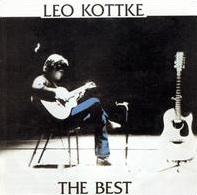
The Best is a compilation double album of American guitarist Leo Kottke's releases on the Capitol label. The liner notes were written by Dr. Demento.

Instrumentals: The Best of the Capitol Years is a 2003 compilation of American guitarist Leo Kottke's releases on the Capitol label. It was released at the same time as Instrumentals: The Best of the Chrysalis Years.

The Leo Kottke Anthology is a two-disc compilation of American guitarist Leo Kottke's releases on the Takoma, Capitol and Chrysalis labels, covering the first 15 years of his career. It includes liner notes by Kottke himself for each song and an essay by Mark Humphrey.

Dharma Blues is the title of a recording by American folk and blues guitarist Peter Lang, released in 2002.

Death Chants, Breakdowns & Military Waltzes is a 1963 album by American fingerstyle guitarist and composer John Fahey. Various sources show either a 1963 or 1964 original release. It was Fahey's second release and the first to gain a national distributor.
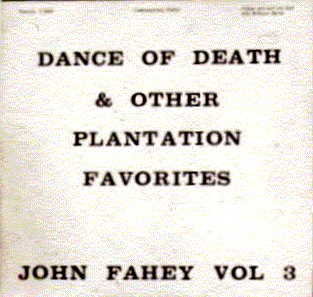
The Dance of Death & Other Plantation Favorites is the third album by American fingerstyle guitarist and composer John Fahey, released in 1965. The 1999 reissue contained four previously unreleased tracks.
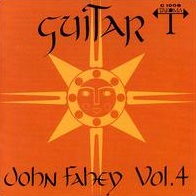
The Great San Bernardino Birthday Party & Other Excursions is an album by American fingerstyle guitarist and composer John Fahey, released in 1966. The cover simply labels the album Guitar Vol. 4 while the liner notes label it The Great San Bernardino Birthday Party & Other Excursions. The title never appeared on the record labels themselves. It marked the beginning of Fahey's interest in his recording of experimental soundscapes and sound effects. Despite Fahey's distaste for the 1960s counterculture, it is his release most often referred to as psychedelic.

The Best of John Fahey 1959–1977 is a compilation album by American fingerstyle guitarist and composer John Fahey, released in 1977. The songs are collected from four of Fahey's dozen or so releases up to that point.
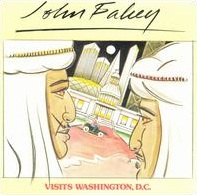
John Fahey Visits Washington D.C. is an album by American fingerstyle guitarist and composer John Fahey, released in 1979.
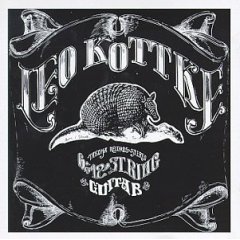
6- and 12-String Guitar is the second album by Leo Kottke, a solo instrumental steel-string acoustic guitar album originally released by John Fahey's Takoma Records in 1969. It is popularly known as the Armadillo album after the animal illustrated in the distinctive cover art. Although Kottke has had a prolific career as a recording artist, 6- and 12-String Guitar remains his best-known album.
Toulouse Engelhardt, is an acoustic guitarist and the last member of the Takoma Seven, a group of fingerstyle guitarists who recorded for Takoma Records from 1959 to 1976. The group included John Fahey, Peter Lang, and Leo Kottke.
















